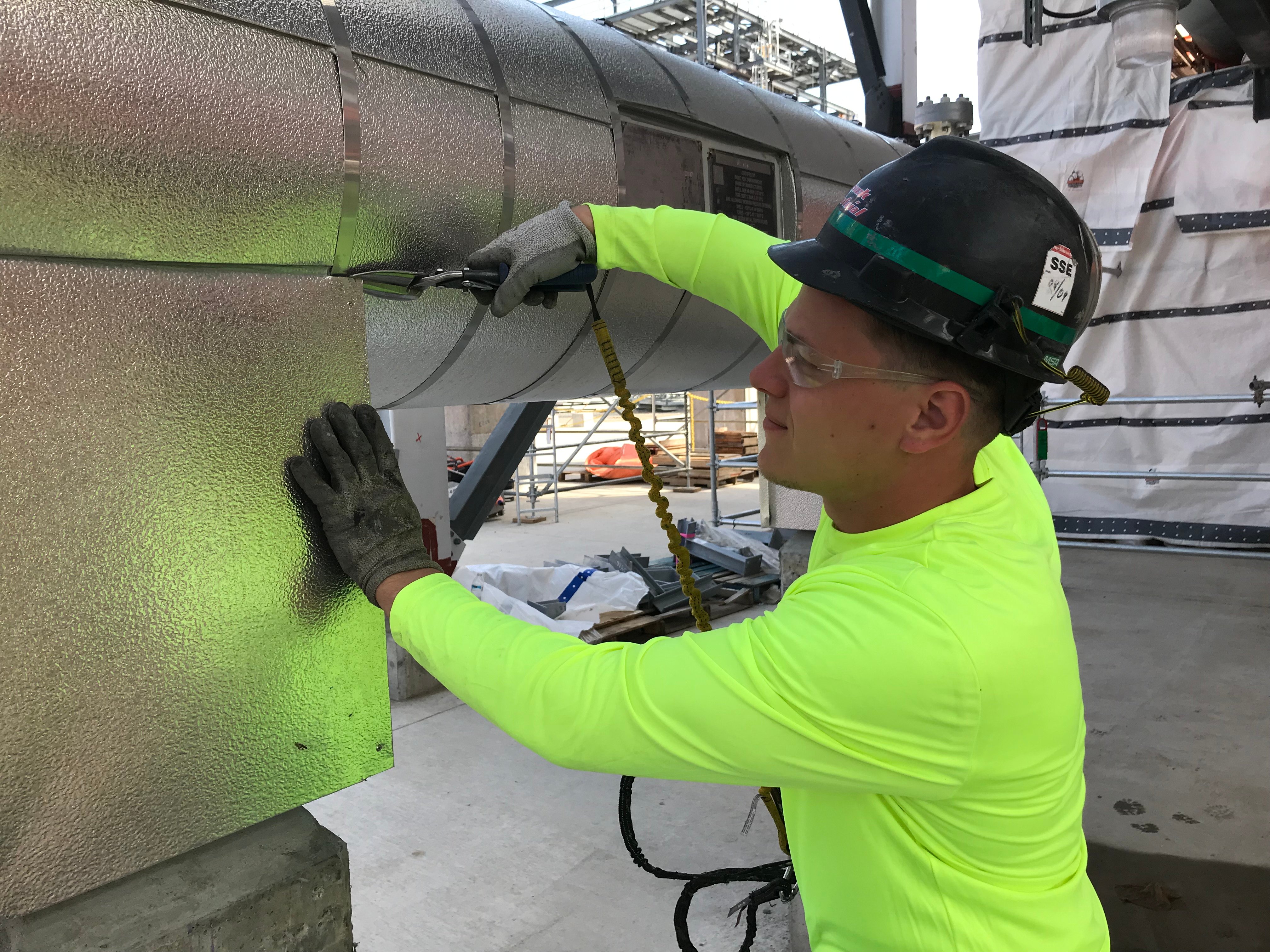BMA partners with Insulator Locals to promote the benefits of mechanical insulation.
When value engineering is brought up in the presence of those affiliated with the mechanical insulation trade, it is often met with derision, and is understood mainly as a cost cutting procedure. While Value Engineering (VE) is often used as a cost cutting mechanism when budgets get tight on building projects, it was not designed with this as its primary function.
It is for this reason, and other, the International Association of Heat and Frost Insulators and Local Insulators Unions have partnered with BMA Media Group to help promote the benefits of mechanical insulation.
Value engineering was originally conceived at General Electric after the Second World War by Larry Miles as “value analysis.” With his value analysis Miles attempted to balance function and cost to achieve optimal value for various products and projects. He defined value as the ratio between function and cost, but made clear that basic functionality had to be maintained when attempting to improve overall value. The goal of value engineering, specifically value engineering as it relates to mechanical insulation, is to maximize the function of the mechanical system while minimizing the cost of its installation, operation, and maintenance.
As is evident, value can be defined in many ways; and depending on the design team involved with a certain project, it is obvious that its definition, and the way it is understood and implemented, can be very different. What is “valuable” changes based on (among other things) the people on a design team and their various motives, budget constraints, and what terms are being used to define value. For instance if you define value in terms of cost and budget you will inevitably be focused on short-term benefits and will consequently engineer possibilities for long-term ROI and quality out of a construction project. On the other hand, if you define value in terms of Quality and ROI you may run the risk of going over budget, but you will ensure the quality of your construction, and the long-term opportunities for ROI (due to preservation of mechanical systems, lowered maintenance costs, and energy savings). If done correctly Value Engineering will find the right balance between quality, function, cost, and Return-on-Investment.
Although this is true, all too often, value engineering is done poorly; with the consequence being that quality, value, and long-term benefits are sacrificed to short-term budget constraints, construction costs, and time. This type of “value engineering,” isn’t true value engineering, it is cost-cutting; and will end up costing building owners much more down the road.
Cost and value are not synonymous concepts, but they are often used indiscriminately when discussing a building project. When ‘value engineering’ is used incorrectly as cost-cutting, that is, when budget constraints force decision makers to make bad, short-sighted decisions that decrease the overall value of the project, it is usually due to an over simplified understanding of cost. In the context of a project, cost is never simple or singular. There are many types of cost. For most large scale building projects, cost can be split into three types: construction costs, building operation costs, and building maintenance costs. Splitting cost into these three types will help us understand the complex relationship between cost and value.
- Construction Costs
- Operational Costs
- Maintenance Costs
Construction costs are the most transparent costs when planning a building project, and are basically comprised of the cost of design, materials, and time. Construction costs are concerned, as their name makes clear, with the construction phase of the project. Because the construction phase is the first—and to most people involved—the most important stage of the project, they are often focused on its costs to the neglect of the other types of costs, namely, operational and maintenance costs. This overemphasis on construction costs may be better understood if we take into account people’s propensity to overemphasize present benefits (i.e. meeting budget) at the expense of future benefits (i.e. increased life of building, health of personnel, long-term ROI). In behavioral economics this bias to more heavily value present benefits is known as ‘time inconsistency,’ ‘temporal discounting,’ or the ‘immediacy effect.’[1] The result of this bias is that decision-makers often weight the present more heavily than the future when making large scale decisions, and consequently, often end up making sub-optimal decisions they will regret in the future.
Now that we have a better understanding of construction costs and why they are often over emphasized during the planning and design stages of large scale projects, we can discuss operational and maintenance costs. Operational and maintenance costs are often overlooked in the design stages of a building project for the same reason construction costs are overemphasized: people’s tendency to overemphasize the value of present benefit and discount the value of future benefit. Construction costs are calculated and felt by decision makers in the present, whereas operational and maintenance costs, although provisionally forecasted, are not; and thus are lightly weighted factors for decision making.
Mechanical insulation is a technology that affects the future. This is why it both valuable and often overlooked. Mechanical insulation installed by highly trained and highly skilled Insulator Union members will decrease operational and maintenance costs, preserve the life of your mechanical system, maintain a healthy environment for building personnel, and bring substantial Return-on-Investment.
BMA Media Group has worked with the International Association of Heat and Frost Insulators and Allied Craftworkers to promote the use of mechanical insulation. Members of the BMA staff have worked with Insulator Locals to educate decision makers on how mechanical insulation brings ROI because it is an investment, and therefore will only show its worth over time.
[1] Frederick, Shane; Loewenstein, George; O'Donoghue, Ted (2002). "Time Discounting and Time Preference: A Critical Review". Journal of Economic Literature 40 (2): 351–401. doi:10.1257/002205102320161311.
LaborTools powered by BMA Media Group is used to help strengthen our union client’s organizations. From working with unions from the local level to the international, with training funds and labor management partnerships, as well as other labor organizations, BMA has experience with organizations of all sizes. We are here to create and implement unique and customized marketing campaigns for our clients.
At BMA, we offer services in the following categories: union event services (from writing the history of your union to executing the logistics of an event,) video production, website design, union marketing campaigns, print and broadcast advertising, social media management, development of print materials, building trades industry education, labor public relations and crisis management, union merchandise, as well as strategic branding and marketing of union organizations.
BMA Media Group is a Union Building Trades Contractor, signatory with International Brotherhood of Electrical Workers Union Local 673 and International Union of Painters and Allied Trades DC 6 / Sign Display and Allied Trades Local 639. BMA Media Group is also signatory with AFTRA and an affiliate contractor of the Cleveland Chapter of NECA.



